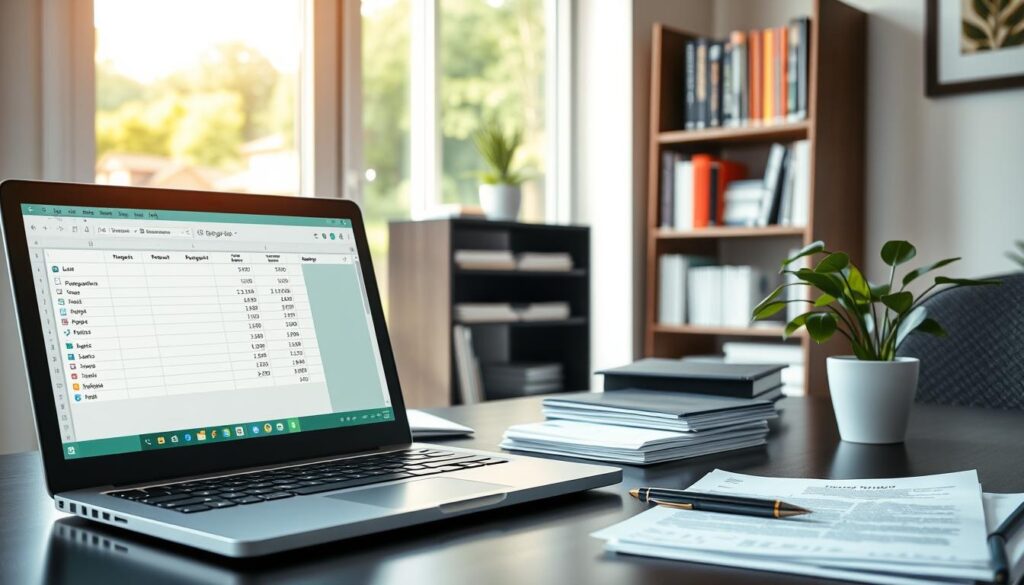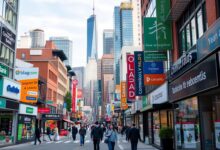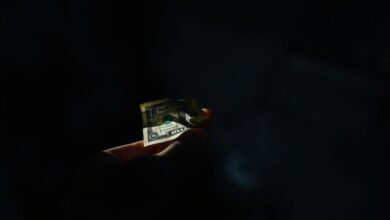Our Guide to Getting a Personal Loan
Did you know that over 26 million Americans took out a personal loan in 2022?
This number shows how many people use online personal loans for different needs. These needs include paying off debt and buying big things.
A personal loan is a loan with a fixed rate and monthly payments. You get a big sum of money after approval. You can use it for almost anything.
This guide will help you understand how to get a personal loan. We’ll cover the basics, like what it is, its types, and why it’s useful. This way, you can make a smart choice.
Key Takeaways
- Understand what a personal loan is and how it works.
- Learn about the different types of personal loans available.
- Discover the benefits of using a personal loan for financial needs.
- Find out how to qualify for a quick personal loan.
- Explore the process of applying for an online personal loan.
Understanding Personal Loans
Personal loans are a way to borrow money from a lender. You pay it back with interest over time. They can help with debt, big purchases, or emergencies.
Definition of Personal Loans
A personal loan is a deal where a lender gives you money. You then pay it back, usually with interest, over a set time. Knowing the terms is key before you agree.
Types of Personal Loans
There are mainly secured and
Secured loans need something valuable as collateral. If you can’t pay, the lender can take it. Unsecured loans don’t need collateral but might have higher rates or stricter rules.
| Loan Type | Collateral Requirement | Interest Rates | Risk Level |
|---|---|---|---|
| Secured Personal Loan | Yes | Generally Lower | Lower for Lender, Higher for Borrower (risk of losing collateral) |
| Unsecured Personal Loan | No | Generally Higher | Higher for Lender, Lower for Borrower (no risk of losing collateral) |
Even with bad credit, you might get personal loans for bad credit. But, you might get worse terms, like higher rates. Knowing this helps you make a smart choice.
Why Consider a Personal Loan?
In times of financial uncertainty, knowing the benefits of a personal loan is key. We often need quick access to funds. A personal loan can offer the financial support we need.
Debt Consolidation Benefits
One big plus of a personal loan is its power to consolidate debt. With a low interest personal loan, we can merge many high-interest debts into one. This makes our financial life simpler and can save us money on interest.
This simplification can lead to easier monthly payments and less stress. It’s important to look for personal loans near me to find the best rates and terms for our situation.
Emergency Expenses
Personal loans can also help with quick personal loans for emergencies, like medical bills or car repairs. These unexpected costs can really hurt our finances. But a personal loan can help us cover these costs without using up our savings.
Having quick access to funds helps us deal with emergencies fast. This avoids more financial problems. It’s important to know the loan’s terms and conditions to make sure it fits our financial situation.
How to Determine Our Loan Needs
Figuring out what we need for a personal loan is the first step. We must look at several factors that affect our money situation and goals. This means checking our current finances and what we want to achieve in the future.
Assessing Financial Goals
First, we need to know why we want a personal loan. Do we want to pay off debt, buy something big, or handle unexpected costs? Knowing our goals helps us figure out how much to borrow and how to pay it back.
For example, if we’re paying off debt, we need to know how much debt we have. If we’re buying something, we must know the cost and any extra fees.
When looking at personal loans or online personal loans, we must think about our financial stability and the loan’s terms. Secured personal loans might need collateral, which can affect our choice.
Calculating Loan Amounts
To find the right loan amount, we need to look at our income, expenses, and debt. A good start is making a budget that shows our monthly income and expenses.
| Category | Monthly Amount |
|---|---|
| Income | $4,000 |
| Fixed Expenses | $1,500 |
| Debt Repayment | $500 |
| Savings | $1,000 |
| Disposable Income | $1,000 |
Financial expert Dave Ramsey said, “Winning at money is 80% behavior and 20% math.” This is true for managing personal loans well.
By carefully looking at our financial goals and figuring out how much we need, we can make smart choices about our personal loans. This ensures we borrow responsibly and handle our debt well.
Credit Scores and Their Impact
Credit scores are crucial when applying for personal loans. They affect both the interest rate and the loan terms. Our credit score is a big factor in whether we get the loan and what terms we get.
How Credit Scores Affect Loans
A high credit score can lead to low interest personal loans. This makes our loan cheaper. On the other hand, a low credit score might mean higher interest rates or even no loan at all. Lenders see people with good credit as less risky, offering better loan deals.
Here’s how credit scores can change our loan:
| Credit Score Range | Loan Terms | Interest Rate |
|---|---|---|
| 750+ | Favorable | Low |
| 700-749 | Good | Competitive |
| 600-699 | Fair | Higher |
| Below 600 | Poor | High |
Improving Our Credit Scores
We can boost our credit score by paying bills on time and reducing debt. Also, checking our credit report for mistakes helps. These steps can help us qualify for personal loans for bad credit or low interest personal loans later.
Boosting our credit score takes time and effort. But, the rewards are worth it. A better score means lower interest rates and better loan terms.
Researching Lenders
Looking for a personal loan? Don’t skip the research step. There are many lenders with different terms. It’s key to find the right one for you.
Types of Lenders
There are several lenders to consider. These include:
- Traditional banks
- Credit unions
- Online lenders
- Peer-to-peer lending platforms
Each has its own pros and cons. Banks might offer better rates, while online lenders are quicker.
Investopedia’s review helps us understand these differences. It shows how to pick the best loan Investopedia’s personal loan review methodology is a great resource.
Comparing Loan Terms
When comparing loans, look at a few important things. These include:
| Loan Term | Description | Impact |
|---|---|---|
| Interest Rate | The rate at which interest is charged on the loan | Affects monthly payments and total cost |
| Fees | Additional charges associated with the loan | Increases the total cost of the loan |
| Repayment Terms | The duration and schedule for repaying the loan | Influences monthly budget and financial planning |
Financial experts say comparing offers is crucial. This way, we find a loan that fits our financial plans.
By researching and comparing, we can make a smart choice. This ensures we get the best personal loan for our needs.
The Application Process
To increase our chances of a successful personal loan application, we need to understand the process.
Documents We Need
To apply for a personal loan, we need to provide several documents. These include proof of income, identity, and sometimes collateral for secured personal loans. Having these documents ready can make the application process smoother.
- Proof of income (pay stubs, W-2 forms)
- Proof of identity (driver’s license, passport)
- Bank statements
- Proof of residence (utility bills)
- Collateral documentation (for secured loans)
Steps to a Successful Application
Once we have our documents ready, we can start the loan application. The steps include filling out the loan application form accurately, reviewing our credit reports, and submitting our application to the lender.
| Step | Description |
|---|---|
| 1 | Gather required documents |
| 2 | Fill out the loan application form |
| 3 | Review and submit the application |
By following these steps and understanding the requirements for personal loans, we can increase our chances of a successful application.

Understanding Interest Rates
When we look at personal loans, knowing about interest rates is key. These rates can change how much we pay back, so it’s important to get it.
There are mainly two types of interest rates: fixed and variable. Fixed interest rates stay the same, making our payments predictable. Variable interest rates, on the other hand, can change with the market, affecting our payments.
Fixed vs. Variable Rates
Deciding between fixed and variable rates depends on our financial situation and how much risk we can take. Fixed rates give us stability, but variable rates might start lower but could go up.
| Interest Rate Type | Characteristics | Best For |
|---|---|---|
| Fixed Rate | Remains the same throughout the loan term | Those who value predictability in their monthly payments |
| Variable Rate | Can change based on market conditions | Those who can afford potential rate increases and want potentially lower initial rates |
How Rates Are Determined
Lenders look at several things to set interest rates. These include our credit score, income, loan amount, and how long we want to borrow. A good credit score can lead to low interest personal loans. But, a bad credit score might mean higher rates or even no loan at all.
It’s also important to remember that rates can differ a lot between lenders. So, comparing rates from different lenders is crucial to find the best deal.
Understanding interest rates and how they’re set helps us make better choices when getting a personal loan. This knowledge can help us save money and navigate the loan process more smoothly.
Repayment Strategies
To avoid financial strain, it’s key to have a solid repayment plan for our personal loans. Good repayment strategies help us manage our loans well and avoid financial troubles.
Monthly Payments Explained
Our monthly payment is figured out by the lender. They use the loan amount, interest rate, and repayment term to calculate it. For example, a longer term might lower our monthly payments but increase the total interest.

It’s important to make payments on time. Late payments can lead to extra fees and hurt our credit scores. Knowing how our payments are figured out helps us budget better.
Early Repayment Advantages
Paying off our personal loan early has many benefits. One big plus is saving on interest. By paying early, we cut down on the interest we pay over time.
Early repayment also boosts our credit score by showing we’re financially responsible. It frees up our budget by removing the loan payment, letting us use that money elsewhere.
Common Mistakes to Avoid
When looking into personal loans, it’s key to know the potential traps. Whether it’s a secured or unsecured loan, mistakes can lead to financial trouble. By knowing these common errors, we can make better choices and avoid stress.
Understanding the Risks of Overborrowing
Overborrowing is a big risk with personal loans, including those for bad credit. Too much debt can cause financial stress and make payments hard. We should carefully check our financial needs and loan choices.
The Importance of Reviewing Loan Terms
Ignoring loan terms is a common mistake. Not reading the agreement can lead to surprise fees. Bankrate says it’s vital to understand the terms to avoid financial problems. Knowing these issues helps us feel more confident when applying for a loan.









